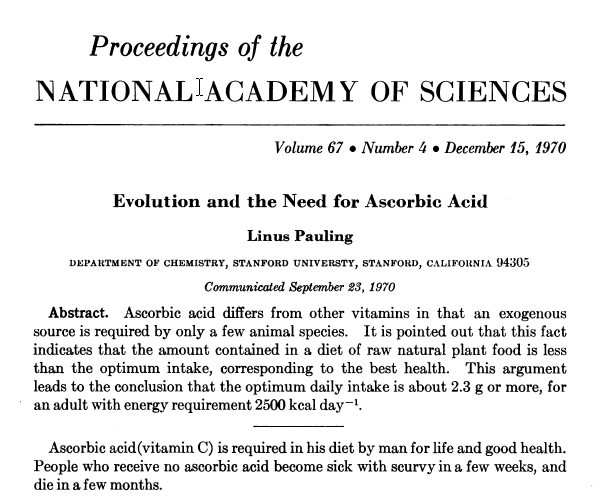![]()
Linus Pauling: I conclude that the optimum daily requirement of ascorbic acid for a human being requiring 2500 kcal of food energy is about 2.3 g (2300 mg) (2.6 g for an adult male, and 2.0 g for an adult female), or is greater than this amount.
We may ask how much greater the optimum daily requirement may be. The loss of the ability to synthesize ascorbic acid has occurred only four times in several hundred million years, so far as we know: in the common ancestor of man and other primates, about 25 million years ago; in the guinea pig; in one Indian fruit-eating bat; and in the ancestor of some Passeriform birds. The animals that underwent this change must have been living in an environment that provided an unusually great amount of ascorbic acid.
I have listed in Table 1 fourteen natural foods that are unusually rich in this substance. They contain between 5.0 and 16.5 g of ascorbic acid for 2500 kcal energy value, with average 9.5 g. It is unlikely that the special environment mentioned above would provide only red sweet peppers (16.5 g), black currants (9.3 g), or broccoli spears (8.8 g); but the average of these fourteen foods, 9.5 g of ascorbic acid, might well have become available to a population of animals a few times during the period of several hundred million years preceding the present epoch.
Accordingly, I conclude that it is unlikely that the optimum daily intake of ascorbic acid by human beings is greater than 9.5 g.
full text of Linus Pauling: Evolution and the Need for Ascorbic Acid. Proc Natl Acad Sci U S A. Dec 1970; 67(4): 1643–1648.
